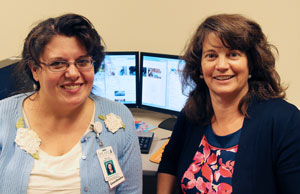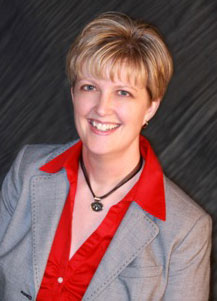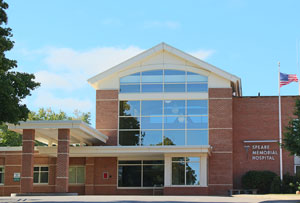Jul 22, 2015
Social Media Savvy
by Kate Menzies

Tweet, pin, share, favorite, snap−these are the social media buzzwords that are changing the healthcare industry. Gone are the days when social media was used as a passive tool of exposure; today it has emerged as an integral part of a healthcare facility's daily operations.
Social media, although relatively new, has captured the interest of people across industries for meeting business goals and objectives, and promoting client interaction.
The healthcare industry is no different.
By harnessing this impactful form of two-way communication, providers have the opportunity to reach their patients and community in quick, personal, and efficient ways. More people are now turning to social media to inform decisions regarding selecting a doctor, hospital, or medical facility.
If rural facilities fail to promote themselves, patients may choose to travel to urban areas to receive medical attention.
Engaging the Community
Rural hospitals and clinics might be leery to venture too deeply into the world of social media. Some may fear the lack of control and the commitment needed, while others may doubt its impact. But take it from Speare Memorial Hospital's Director of Community Relations, Michele Hutchins, who stresses that social media can make a world of difference when trying to attract and satisfy patients.
"At the end of the day it's about choice," said Hutchins. "That choice can be influenced by word-of-mouth created from social media."
Speare Memorial Hospital, located in the rural town of Plymouth, New Hampshire, is active on Facebook, Twitter, LinkedIn, and YouTube. According to Hutchins, these tools have been essential for "…educating the community on what services Speare Memorial Hospital provides so that we may become the hospital of choice."

Dr. Jennifer Brull, physician owner of Prairie Star Family Practice in Plainville, Kansas, uses social media as a convenient way to reach patients in her town of about 2,000 people.
"Social media is woven into the fiber of my practice," said Brull. "It's a quick and easy way to remind people that flu season is around the corner or that it's about time that your child gets his/her sports physical done."
Aside from friendly reminders, Brull uses social media as a way to "…meet patients where they're at." Social media presents a direct, timely form of communication, according to Brull.
Social media is not only used for community engagement, but also for shedding light on important health topics and trends, as well as early prevention methods.
Social media provides a platform that gets people talking about local healthcare issues because the virtual world can be a more comfortable place to have a conversation.
The information provided on social media channels is often unique and engaging, but perhaps more importantly, participatory. The author of the content is able to easily seek feedback from the audience.
"Basically, we are trying to start a conversation," said Hutchins. "Social media provides a platform that gets people talking about local healthcare issues because the virtual world can be a more comfortable place to have a conversation."
Armed with this information, Hutchins and Online Content Coordinator Amy Lyn Kench use Speare Memorial Hospital's social media to serve as a health resource, directing people to local programs and services available to them. This strategy has paid off. Since early 2014, engagement with the hospital's social media has increased 20 percent.
Strategy First
Social media use is not something to be taken lightly. If a provider chooses to implement social media channels, it needs to have a well-defined strategy driving their use. Otherwise, the message can be lost in a sea of other information.
Each form of social media has its own audience and function. Content needs to be evaluated in the context of the facility's communications needs. Facebook and Twitter are the two most used social media channels. Facebook has approximately 1.19 billion monthly active global users, according to the November 2014 article titled "Use of Social Media Across US Hospitals: Descriptive Analysis of Adoption and Utilization". This study revealed that more than 99 percent of U.S. hospitals have a Facebook presence. Healthcare facilities can use Facebook to create lengthier messages, post photos, upload videos, and link to articles and other information in order to showcase particular services, facilities, and community health activities. Speare Memorial Hospital uses Facebook to promote local health programs and events, give healthy living tidbits, and expose followers to evidence-based information on various health symptoms and procedures.
Twitter is also quickly gaining ground in the world of healthcare. About half of U.S. hospitals have a Twitter account, according to the aforementioned article. Twitter posts are limited to 140 characters, thus contain shorter messages. Many hospitals use this platform to quickly inform users of local safety concerns, such as weather warnings. Twitter can also be a convenient tool to gauge patient satisfaction. The organizations can actively listen to what is being said about them through searching for the use of certain hashtags and watching for when the organization is mentioned in other users' tweets. These tools give facilities eye-opening information about what people have to say about certain topics. Speare Memorial Hospital often uses Twitter to connect its other social media platforms by sharing similar content as its Facebook page or by linking its YouTube videos right to its Twitter page.

Speare Memorial Hospital is also active in using LinkedIn and YouTube. LinkedIn is a site most often utilized for professional networking and recruitment. LinkedIn allows the hospital to share job opportunities for recruitment purposes and, similarly, healthcare professionals can get information on the hospital as a potential employer.
YouTube is a useful tool for telling stories about a healthcare facility and the people it serves through videos. Many of the videos on Speare Memorial Hospital's YouTube channel contain personal testimonies of patients who have had positive experiences with the organization. Others videos give patients the opportunity to become more familiar with the facility's medical providers and services.
So what if rural facilities don't have the time to manage every social media outlet at their disposal?
Hutchins and Kench recommend only operating the social media channels that meet the organization's direct communications needs and that can be kept up in a timely manner.
Social media has been, and will continue to be, a moving target.
Social media is ever-evolving. Today's biggest platforms could be replaced tomorrow, so it is important to keep up-to-date with ways in which healthcare consumers seek out health information. Organizations should invest in training opportunities for employees who have access to social media accounts, as well as remain vigilant on following emerging research regarding social media in the healthcare industry.
"Social media has been, and will continue to be, a moving target," said Brull.
Social media can be a tricky field to navigate. People have the ability to overshare on social media, thus bringing privacy concerns and HIPAA regulations into consideration.
In order to combat this, Hutchins advised that hospitals and clinics set up strict policies on what can and cannot be posted, as well as how to address negative feedback.
Brull added that it's important that medical professionals and practices refrain from initiating direct conversations with a patient about his/her personal health over social media.
It needs to be planned, controlled, and monitored to fit within the [organization's] communication strategy.
"In every industry, social media can be used improperly," said Hutchins. "It needs to be planned, controlled, and monitored to fit within the [organization's] communication strategy."
Social media is an important marketing tool for healthcare facilities to attract and retain patients. It gives providers a chance to get creative in connecting with patients in a more personal manner, but it takes time, resources, and a clear strategy.
As Speare Memorial Hospital's Kench notes, "If you're going to do social media, you have to do it well."
